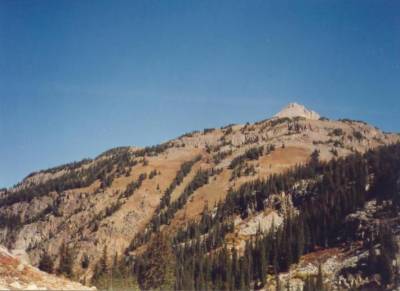
Talking to biologists, looking at statistics, and visiting forums are all great and necessary but tend to cause a hunter to think too big. We need more specific information.
Our research often causes us to think in units, but quality bucks think in terms of feed and security. We often mistakenly show up for the hunt expecting the reputation of the unit to produce the results. In reality, we need to find exact places in the unit where the bucks are living and hunt those places correctly for the best results.
Usually, the best source of information is going to come from your own scouting and hunting. Typically, you’ll need to narrow down a big unit to smaller bites of country where you can focus your hunting days. That takes time—often several seasons—and is where you can get ahead of other hunters who are thinking too big and jumping around too much.
A unit may be draw or general—the bucks don’t care—but usually has small pockets of protection you can find by scouting and hunting. Learning the two ridges and basin where a buck lives is virtually impossible unless you are there and there repeatedly. This is thinking small but produces the best results.
By thinking too big, we sometimes rule out units that have the potential to meet our goal. “Unit X isn’t good for big bucks,” can be an over-generalization. The unit may not be considered good, but parts of it could still produce great bucks.
For example, some units have low success rates for big deer so hunters look elsewhere. Well, “elsewhere” might have a higher success rate, but will also attract more hunters and likely carry a younger age class of bucks (unless it is a low-odds draw tag.) By thinking smaller, we might consider units that often get overlooked in the statistics. You have to scout to find these units, but they are out there.
A friend of mine found a tenacious buck a few years back in a unit that butts up against a fairly big town in Southern Idaho. Most people think of the unit as a place to kill a meat buck, and for the most part, it is. However, my friend is a great buck hunter and looks for the small parts of units where bucks find the needed security and feed to survive and thrive.
One August morning, he found this buck—a buck over 30” wide—living a mile from town in some rough coulees that for the most part held very few deer. It was definitely not a destination for trophy hunters and the unit would never be listed in the latest mags as a must-apply.
I try to scout places like that when possible. Often I come up empty handed, but on occasion, I’ll find a real sweet spot that gets overlooked due to the unit’s average reputation. The photo at the opening of this post shows a relatively small mountain in a unit that produces low-to-average stats on deer and big deer, yet I’ve seen several of the best bucks in my life there.
Make sure in your research, you don’t think “Too Big”.
Question: Have you ever found an exceptional buck or bull in an average unit? Why do you think he was there?




















Both of the good bucks that I hunted this past season were in what I would say are average units. Neither were that far from trailheads either. What they both had in common was locations that other hunters overlooked because they weren’t far away from trails. Both were in great hiding spots that made it tough to find them. Its about taking advantage of every opportunity, even close to town to be looking for deer!
Robby great advice!
I’ve been more focused on finding the small honey holes rather than putting on those long 3-4 mile hikes covering lots of ground. A few years back we ran into a really good buck 30+ inches during archery season and then saw a glimpse of him during rifle season. This buck stayed put in an area less than a square mile and had everything he needed. Those big boys are smart. I hope to get smarter then one of those big boys sooon. Thanks for the Bolg.
Louis and Scott, you both illustrate the point of focus while hunting big deer. Usually, covering lots of ground is for scouting, not hunting.
Good stuff Robby,some of the best bucks and deer utopias I have found in small pockets while scouting are in medocore as a hole units.
Comments are closed.